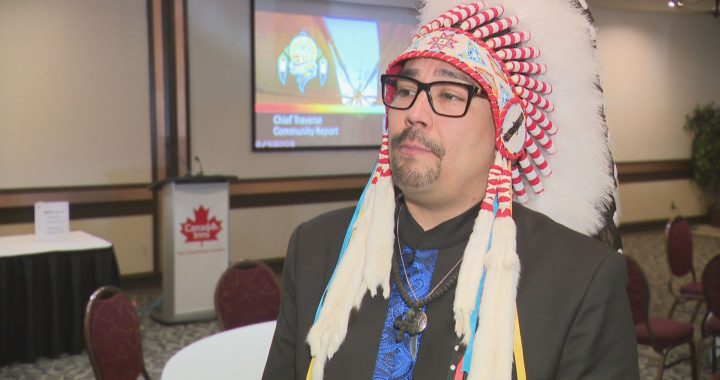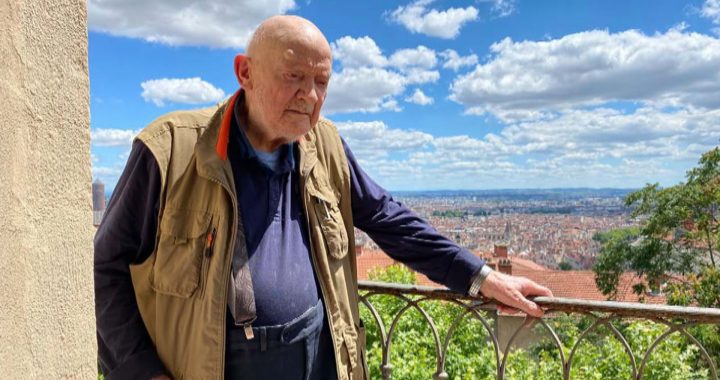An Inuit energy company and Hydro-Québec announced their partnership on Monday to bring renewable energy to residents of Nunavik, the Inuit region of northern Quebec.
Inuit-owned and -operated Tarquti Energy Corporation will develop renewable energy projects in collaboration with local co-ops and Hydro-Québec will distribute the power.
While Nunavik is experiencing some of the most dramatic effects of climate change, the region’s main power source is diesel-powered generators.
“Our unfortunate situation, in the north, we’re not ‘connected to the grid’ as they say, like the rest of the province of Quebec. We’re very much isolated. So we’re still relying on diesel fuel,” said Pita Aaalarmi, president of Makivik Corporation.
“If we’re giving the message that global warming is happening … then we have to practice what we are telling the world by going into clean energy.”
Now, Inuit are looking to harness untapped solar and wind power.
“The wind is exceptional, like when we tell people we’re coming to measure the wind, they look at us like we’re a little crazy. The challenge really lies in finding equipment we can install on Arctic territory, with the climate we’re in. The challenges are the logistics,” said Joe Lance, Tarquti’s general manager, in French.
Tarquti is a joint venture between Makivik Corporation and Fédération des Coopératives du Nouveau-Québec, two main economic development organizations in Nunavik.
The corporation has been around since 2016, but Aalarmi said not much was moving until last year when they partnered with Hydro-Québec, with the goal of benefitting Inuit.
“We’re not there to try to make money, we just want to have clean energy, and whatever money that we make, we’re going to give it right to the community where the energy’s being produced,” Aalarmi said to APTN News.
Sheila Watt-Cloutier is an Inuit ecological activist who is helping Tarquti find solutions and communicate with communities.
“Who better than the Inuit of Nunavik and the Inuit of the world to take on that lead, because we have the most to lose,” said Watt-Cloutier.
While this renewable energy will flow through Hydro-Québec’s power grid, and the company will collect user fees, Hydro-Québec president and CEO Sophie Brochu said they’ll only play a supporting role.
“We’re here to help, not to tell the people what to do. We’re here to provide our expertise, but at the end of the day, it will be their call,” said Brochu.
“Due to the historical traumas and the changes that have happened we’ve lost a lot of control over our lives, so what we’re trying to do now, and this is very much part of what we’re trying to do today, is we’re trying to get back on our feet and take charge and control.”
Historically, mining and oil exploration in Arctic regions have been done without consultation with Inuit, said Aalarmi.
“What happened in the past, it created a lot of animosity between the Inuit and the non-Native society. We want to change that. We want to work with you,” said Aalarmi.
Both Watt-Cloutier and Aalarmi feel this agreement with Hydro-Québec to produce renewable energy is ushering in a new era of sustainable development.
“If we can take ownership and feel like we’re in control here, and we’re doing something not only to protect our land and our waters, but we’re also doing something for the entire planet because the Arctic’s ice serves as the air conditioner, and it’s breaking down,” said Watt-Cloutier.
Tarquti is still measuring wind data and figuring out logistical issues of transporting equipment and storing solar energy, so there is no set date for when Inuit will have access to renewable energy. But the ultimate goal is to wean off fossil fuels as much as possible, and Watt-Cloutier is optimistic about the effect this will have on generations to come.
“It isn’t just about the ultimate goal, which is going to be far down the road, but it is what is being developed along the way, the capacity of the younger generation, and the learning they do about themselves and the project and how they connect and build back that kind of confidence,” she said.
“This is the opening, I think, that’s going to lend itself out to different, innovative, imaginative sustainable activities in our region.”









